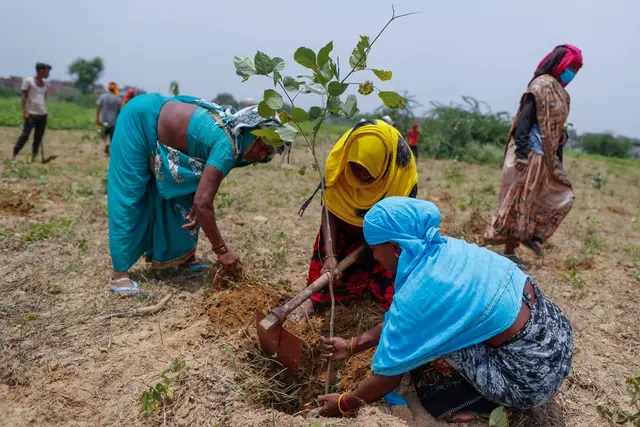Extreme climate events have been increasingly threatening the countries and the livelihoods of its population across the globe. Unpredictable weather and natural disasters have affected some communities more, especially women due to their vulnerability.
The last few decades saw intergovernmental processes of the United Nations Framework Convention on Climate Change (UNFCCC), Conference of the Parties (COPs), and the Lima Work Programme on Gender (LWPG), 2014, working to advance both gender responsiveness and equality into climate action and policy measures. However, despite commitments made towards implementing gender-equitable actions under the UNFCCC Lima, India has made very little progress on incorporating a gender lens in climate action. In fact, the disparities and inequity between men and women, other vulnerable groups, have increased during the COVID-19 pandemic.
Cultural barriers, gender norms and lack of education are primary factors that place women way behind men. According to the World Bank, in 2004, more women died in the tsunami in Thailand compared to men, for they stayed back to take care of their families. Lack of education makes women more dependent on their families and communities and jeopardise their opportunities to move ahead and grow in life. The disproportionate burden of taking care of their homes and children makes them more vulnerable during the event of ecological disasters.
80% of all economically active women in India work in the agriculture sector. Women make 33% of the total agriculture force of India and 48% of them are self-employed farmers. Agriculture is affected by the climate crisis the worst. It has been recorded that women in many parts of India walk miles in search of water. Severe droughts as a result of extreme weather events result in these women travelling further risking their health and safety. There is an increased need for making women climate-resilient. According to the World Bank’s data, as of 2019, globally the proportion of seats held by women in national parliaments is only 24%. Also, in the year 2018, the UN Climate Change Conference COP24 witnessed only 38% representation of women. The numbers reflect the low participation of women in decision-making and policy formulation. Their limited participation limits their ability to advocate for climate solutions. Leaving out and disregarding women and their needs will not bring sustainable, inclusive or holistic climate-mitigation actions.
Educating women about climate change, involving them in decision-making and empowering them with skills play pivotal roles in making them climate-resilient. Seacology, a nonprofit 501 charitable organisation headquartered in Berkeley, California, in the year 2015 conducted a mangrove conservation project in Sri Lanka. It undertook the project in collaboration with a local NGO and aimed at replanting 9600 acres of mangrove forests that had been cut down. The project offered alternate job training and microloans to impoverished women from 1500 small fishing communities. The project trained around 12000 of these women teaching them to be climate-smart and transforming them into ground-level leaders, fostering sustainable farming methods. Similarly, the UN Environment Programme undertook a solar energy project in Bangladesh. It surveyed 32 villages in the six remote districts of the country and identified eleven occupations which could adapt its workings and use solar energy. The project benefited around 300 women directly. India also catalogues stories of women acting as agents of change. For example, in Bhadrak, Odisha, women’s self help groups joined hands to generate solutions for portable drinking water. Bhadrak has been witnessing increased salinity of the groundwater due to a rise in seawater levels and decreasing monsoons. Women are adversely affected because they have to travel miles to collect water. The SHGs have grouped and are finding solutions to women-related issues that are otherwise ignored.
There is a direct relationship between gender equality, women’s empowerment and climate change. The UN’s Sustainable Development Goal 13 talks about taking urgent action to combat climate change and its impact and places special emphasis on strengthening adaptive capacity and resilience. However, there are no gender-specific or sensitive targets or indicators for the goal. The related sustainable development goals – #6 on water and sanitation, #14 on life below water and #15 on life on land, although contributing towards climate change, but lack gender-sensitive indicators. Including and increased participation of women in decision-making positions, educating them with transversal skills and involving them in climate-resilient projects, will not only empower them but will also promote them as equal stakeholders in finding solutions to extreme weather adversities and catastrophes.
